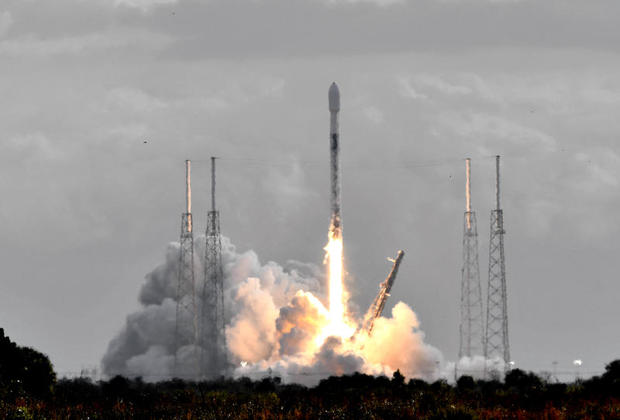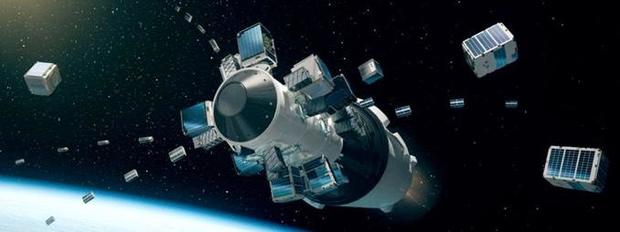[ad_1]
A SpaceX Falcon 9 rocket boosted a record 143 small satellites into a polar orbit on Sunday in the company’s first dedicated “rideshare” mission, a response to the growing demand for low-cost access to space by smaller, non-traditional companies and institutions.
The “Transporter 1” mission also served as a reminder of the ongoing debate over what role the government should play regulating the increasingly crowded domain of low-Earth orbit where collisions would create high-speed shrapnel threatening other spacecraft.
“No universally accepted ‘rules of the road’ exist for the safety of space operations, much less a regulatory regime for active risk management and collision avoidance,” NASA’s Aerospace Safety Advisory Panel wrote in its recently released 2020 annual report.
“As the potential for orbital collisions rises with increasing congestion, it is important to recognize that risks to astronauts, critical national security capabilities and global space commerce are also on the rise.”
William Harwood/CBS News
Running a day late because of bad weather, the Transporter 1 mission began with a ground-shaking roar at 10 a.m. ET as the Falcon 9 lifted off from Cape Canaveral and arced away on a rare southeasterly trajectory toward a 326-mile-high orbit around Earth’s poles.
After propelling the rocket out of the lower atmosphere, the first stage, making its fifth flight, fell away and flew itself to an on-target landing on an off-shore drone ship southeast of Miami. It was SpaceX’s 73rd successful booster recovery and the 51st at sea.
The 143 satellites atop the second stage were the most ever launched by a single rocket, eclipsing the previous 104-satellite mark set by India’s Polar Satellite Launch Vehicle in February 2017.
“Excited about offering low-cost access to orbit for small companies!” SpaceX founder Elon Musk tweeted Friday.
SpaceX charges a relatively low $1 million to launch a 440-pound satellite and $5,000 for every 2.2 pounds above that base level. The company says Transporter missions will be carried out every four months or so as required.
Sunday’s flight featured a smorgasbord of CubeSats, nanosats and other small spacecraft provided by multiple companies and institutions.
The manifest included 10 of SpaceX’s Starlink internet relay stations, pushing the total launched to date to 1,025, 48 Planet-built SuperDove Earth-imaging satellites and a wide variety of “smallsats” devoted to commercial applications, technology development, scientific research. and education.
Memorial spaceflight company Celestis sent cremains aloft in small containers representing 114 “participants,” including ashes from the late CBS News Radio correspondent Dave Barrett, a lifelong space enthusiast.
Rideshare flights are a recent commercial innovation giving companies and institutions relatively quick, affordable access to space they might not otherwise be able to secure.
Exolaunch
But critics worry the rapidly increasing numbers of satellites, in the absence of government regulation and control, will translate into an increased threat of potentially catastrophic collisions.
The Aerospace Safety Advisory Panel called space debris “a major safety issue” and the “dominant contributor to calculations of loss-of crew predictions” for SpaceX Crew Dragon and Boeing Starliner astronaut ferry ships and Lockheed Martin’s Orion deep space capsule.
Space debris also contributes to two of the top three risks faced by the International Space Station.
“The hazard persists and continues to grow exponentially,” the report states. “Space is becoming more congested. For example, CubeSats and other small satellites are being launched with increasing frequency, and several companies are now deploying mega-constellations with hundreds, or even thousands, of satellites.”
U.S. Space Force provides satellite tracking, but it is growing increasingly difficult and there is no regulatory framework governing active risk management and collision avoidance.
“Given the recent increase in non-traditional commercial space operations, including satellite servicing, space tourism and the deployment of large numbers of satellites to provide worldwide internet access, updates to the existing roles and responsibilities may be appropriate,” the ASAP said.
“As things stand today, there are no clear lines of authority for directing coherence among the many entities that operate in space.”
[ad_2]
Source link

